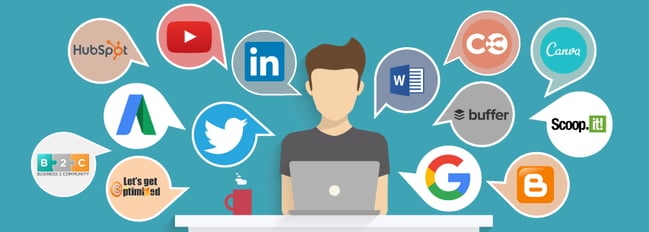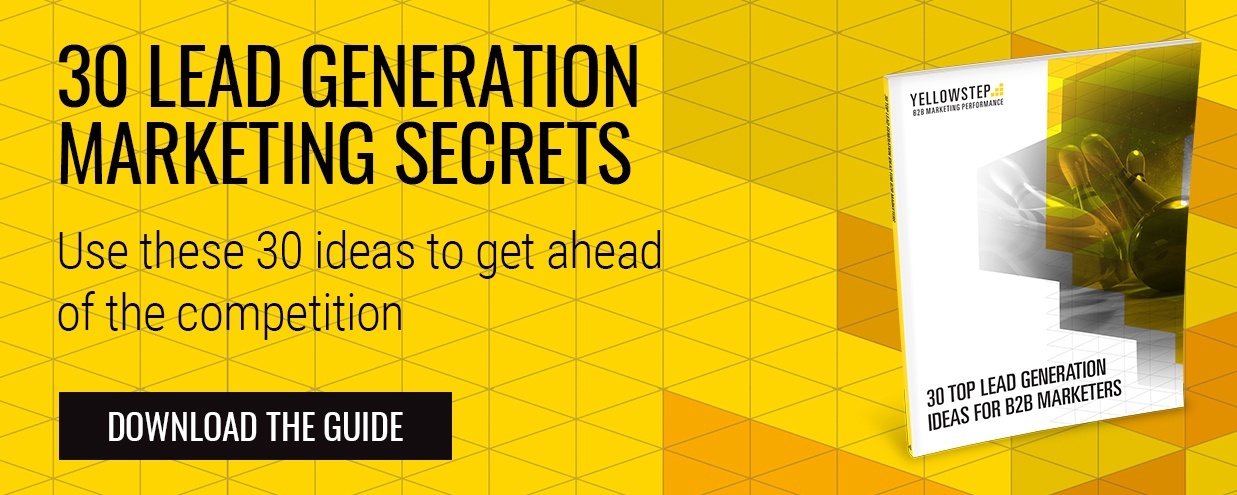
You've spent so much time developing your software so that it can make your target market's dreams come true, but then you realise, you're only part of the way there. Now you have to take your product to market, and use marketing to make it a success, but where do you start?
Marketing is always in question. Is it working? Why isn't it working? Why does everyone else seem to be doing so much better? Whenever the yearly budget is stretched, it's always marketing that gets the cut first - but surely, it's marketing that helps people to understand what is so awesome about your software in comparison to your competitor. Surely, it's marketing that helps increase your brand awareness and gets people talking about your software - so here lies the problem.
If you're asking questions like, is it working? Why isn't it working? Why is everyone else doing better? Then you're simply just not doing it quite right...
Research your competitors
If you don't know what your competitors are offering in comparison to your service, how will you be able to encourage your potential customers to choose you over them? The first step of ensuring the success of your digital marketing is to research your competitors and understand what they offer, and how they market it.
This goes far beyond the information that they offer on their websites! Look into their social media channels, what networks are they on? How often do they post? What types of content are they sharing? Who follows them? Who are they following? Pick apart their social platforms and audiences to learn as much as you can about their online behaviour and engagement rates.
You should also take a look at their website traffic data, bounce rate, and time spent on the site to decipher how potential customers feel about your competitor, tools like SimilarWeb can help you with this.
And don't forget to investigate the keywords that your competitors are trying to target, who writes for their blog and the topics that they cover, the content offerings that they have available online etc. Starting to understand the strategies that your competitors use will help you to decipher what techniques you might need to get ahead in the game.
Optimise your website

Optimising your website for conversions is essential to being successful online! No matter where a visitor should land on your website, there should be a clear path to conversion.
Before I explain a couple of basic best practices to get the conversion optimisation process started, it's important that you A/B test elements of your website so that you can learn and understand what works better for your audience. After all, you want to get the best conversion rate possible! Here are a couple of best practices that you should start to implement on your website:
Valuable content offers
The value of your offer has to be greater than what you're asking your website visitors for, otherwise they won't convert. Make it clear to your visitors that your content is valuable too by outlining the benefits to them on your landing pages!
Eye catching CTAs
You'll probably have read blogs that say a red call to action will perform better than say a green one, but that isn't necessarily true for your website! You need CTAs that will stand out from your website background, but still be in line with your brand guidelines. Use actionable language so that people know what to do and what they're getting. Again, A/B test your CTAs to understand what converts - which copy is better, which design is better, which colours, shapes, fonts etc.
Reduce form fields
I'm pretty sure that not all of your form fields are absolutely necessary! Be eliminating any form fields that you don't need, you're shortening the time people need to spend filling out their details and you're therefore encouraging your website visitors to fill out those forms.
Other areas to consider for increasing your website conversion optimisation are:
- Site navigation content and order
- Imagery - do they help or hinder your your story?
- Testimonials and social proof to show you really can do what you claim
- User journey - how many clicks does it take a visitor to reach your goal?
- Page speed needs to be fast so you don't lose your visitors' attention
Create customer-centric content

The key here is the customer-centric! You are not your customer. You can't write about what you think they're looking for, you have to write about what you know they want to read, and that isn't as difficult as it sounds!
In order for your content to be truly valuable to your target audience, you have to know who you're talking to and what their specific needs are - which will vary depending on their stage in the sales cycle. You need to know what questions your prospective customers will have at each stage of the sales cycle, once you understand this, the content that you create will need to be tailored around each stage.
The first step to understanding your target customer is to create a buyer persona (we have a great guide on how to do this here) so that you can really know what topics they're interested in. By writing content that is valuable to your ideal customers, will attract your more visitors than your current customer base!
With your content created around buyer stages, you will be reaching people who want more information about a subject, who are looking for an answer to a problem (that you can offer) and people who would really consider purchasing your product once you've blown them away with your knowledge of the industry and their needs. Creating content that is customer-centric is a no brainer!
Don't ignore email marketing

So we've mentioned that your website visitors will be in different stages of the sales cycle, which means that your website will have many visitors who aren't yet ready to buy your software, they need to be nurtured that little bit more. The best way that you can do this is to create valuable content that your ideal customer will want, put it behind a form on a landing page and use a perfect CTA to entice your target market into downloading.
When someone downloads your content, they have given you the necessary information that you asked for (please include first name, last name and email address) which puts you in a great position for further nurturing!
Depending on the content that your visitor downloaded, you can keep them updated on the latest relevant blogs you have posted, further downloadable content, upcoming webinars, demos and special offers. By sharing more relevant content with your prospect, it is more likely that they will be nurtured through the sales cycle and want your software!
Get personal

Personalisation in marketing is still on the rise and it doesn't show any signs of going away any time soon! As technology advances, customers are expecting more and more personalisation in marketing and automatically switch off if they open an email that isn't addressed to them specifically.
In fact, studies have shown that more and more consumers are expecting businesses to get personal, to know their name, to know their interests and really give the level of one-to-one service you would get in person, online. Unsurprisingly, customer engagement has been cited as the top reason for prioritising personalisation!
Personlised marketing is the ultimate form of targeted marketing, creating the right messages, for the right consumers (and hopefully, delivering them at the right time). As well as providing a better experience for consumers, personalisation is good new for marketers too, offering a more targeted way of reaching prospects. The more targeted campaigns are, the more likely prospects are to convert.
So ignore personalisation at your peril, with the technology that you have access to, there's no reason why you can't personalise your marketing efforts!
Take the digital marketing checklist...
Wondering if your digital marketing efforts need improvement? Download our digital marketing checklist and discover what your strategy might be missing...
 By
By 